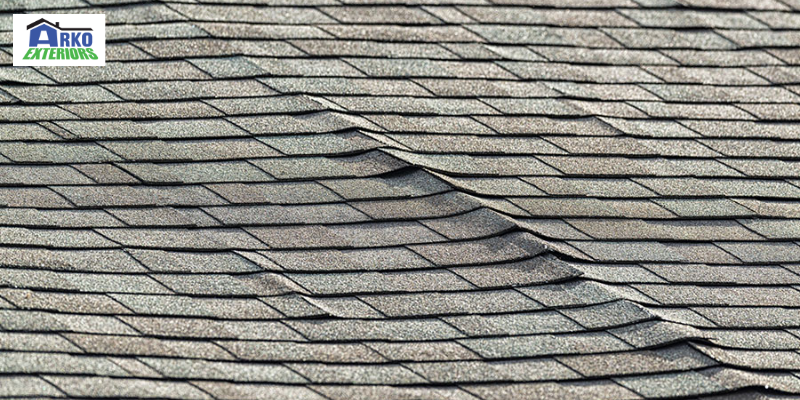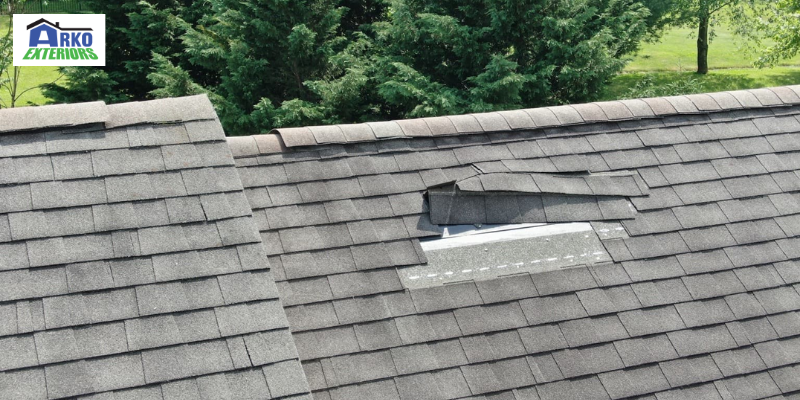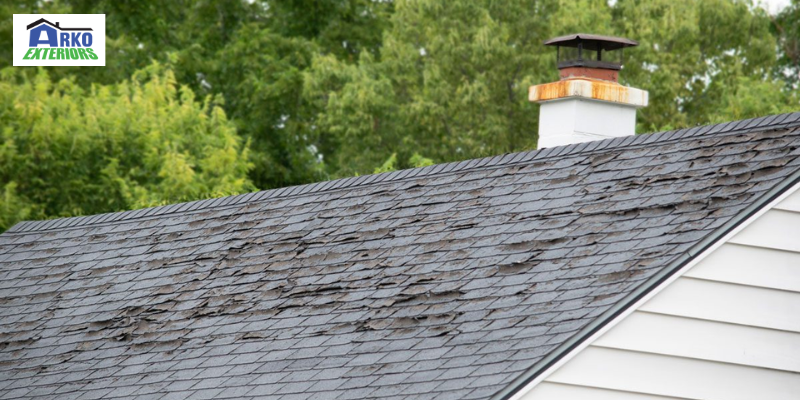Any homeowner would be alarmed by the sight of a sagging roof. Even if you don’t want to deal with it, it’s a typical problem, especially in older homes.
What do you mean by sagging roof?

When a roof seems wavy or curved rather than straight, it frequently indicates a drooping issue.
Due to a damaged structure, sagging is a typical roofing issue that affects homes with older roofs that haven’t been updated in a while. Due to the manner in which older roofs were constructed, they are a typical issue in older homes.
A roof should only droop if something is pressing against it. Sagging when weight is applied might indicate a possible issue because most roofs should be strong enough to support the additional weight without buckling, even then.
Reasons behind sagging roofs

Many different reasons might cause a home’s roof to droop or sag. Here are some of them…
#1 Water damage
Due to the harm it does to the sheathing, water damage is frequently a typical cause of a sagging roof. If your roof is not effectively dispersing water, the extra moisture may cause the roof material to rot or decay, which ultimately causes sagging. It may be essential to replace the sheathing with fresh material to resolve the problem.
#2 Improper material quality of the roofing components
Another frequent root of the issue is the use of materials that are too small. A roof can droop from something as simple as utilizing 2×4 rafters rather than 2×6 rafters. Without internal bracing or with inadequate internal bracing, the walls are susceptible to spreading which will also result in sagging.
#3 Excessive weight on the roof
The load from too much weight on the roof might undermine its construction and result in structural problems. It’s critical to regularly remove snow and ice buildup to avoid a significant accumulation.
Although the majority of roofs are made to endure significant snowfall, too much snow can undermine the roof’s interior structure.
After significant snowfalls, you should frequently clear snow from the roof with a plastic roof rake. Use a plastic one if possible to lessen the possibility of damaging your shingles.
#4 The age of the roof
Sometimes the only cause of a sagging roof is just old age. A roof will endure a long time if it is properly maintained, but occasionally, as a result of aging, the structure might degrade and begin to droop. There isn’t much that can be done at this stage, so it might be time to hire a professional roofing company to have the entire roof replaced.
#5 Broken roof
There is a good chance that you have small roof leaks if you have missing or damaged tiles. Your roof may suffer damage from slow leaks, causing it to droop over time.
For instance, a small roof leak might rot and deteriorate your roof’s frame and sheathing. If your attic has an excessive amount of moisture during times when it shouldn’t, you can also have a ventilation issue.
#6 Impact
Storms can cause structural and wind damage, especially on roofs. For instance, there is a good chance that even after a huge tree branch is removed from your roof, there will still be an indentation there. Your roof’s shingles, structure, roof deck and trusses may all be impacted by this indentation.
Have an experienced roof repair firm inspect your roof right after a storm to look for apparent signs of damage like missing shingles or sagging. Localized leakage is more likely to occur the longer you wait, and this can cause considerable roof sagging and degradation.
Summary:
Roofing experts should be hired for roofing projects. If you have a sagging roof in or around Blaine, Minnesota, call Arko Exteriors at 763-434-2756.

